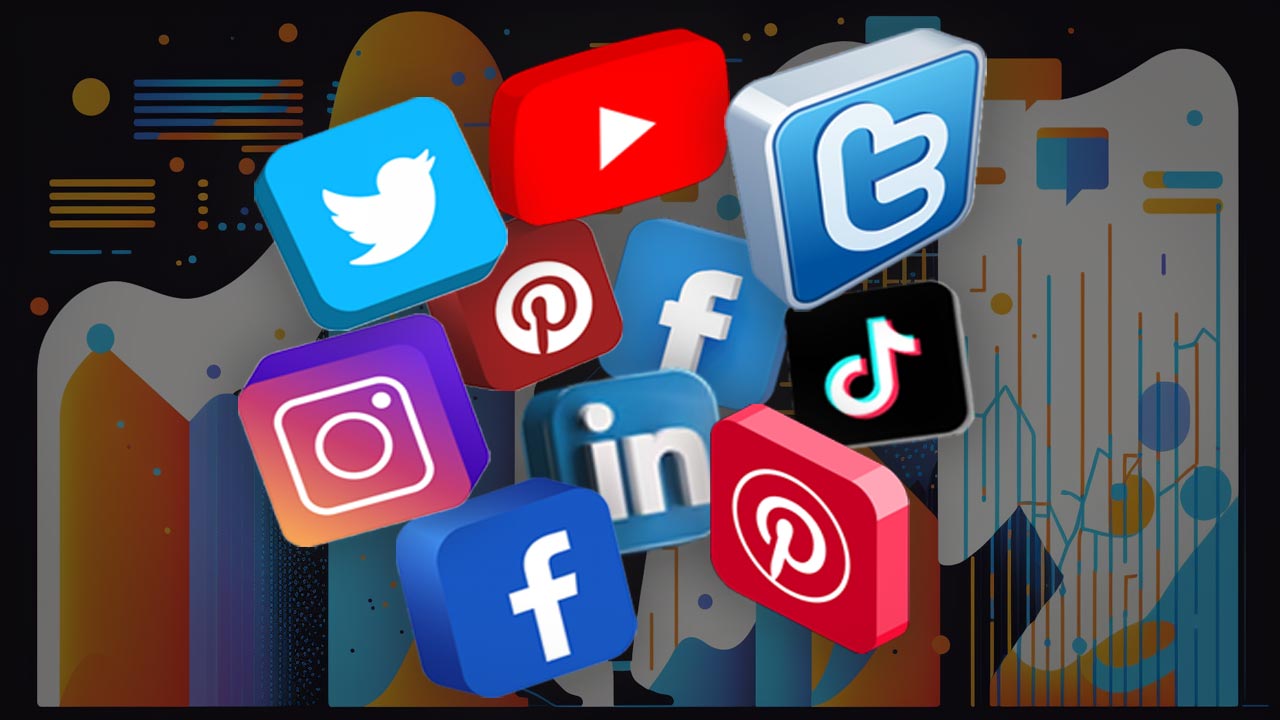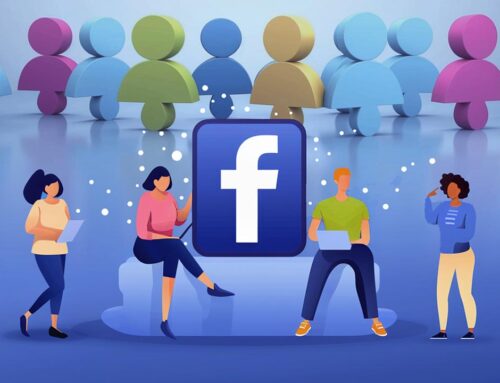Table of Contents
Introduction
Understanding the nuances of social media marketing has become an essential skill for businesses worldwide. This article will serve as a comprehensive guide to the most effective seven social media platforms for marketing in 2023. Social media platforms have evolved from mere communication tools into powerful marketing platforms, which businesses can leverage to reach and engage with their target audience.
The impact of social media on consumer behavior is undeniably profound. According to a report by Datareportal, as of 2022, the number of social media users worldwide reached 4.48 billion, indicating the sheer volume of potential customers that businesses can reach via these platforms1.
We will explore these platforms, considering factors such as user demographics, user engagement, content formats, and unique features that make each platform suitable for specific types of marketing. We’ll delve into the characteristics of Facebook, Instagram, LinkedIn, Twitter, YouTube, TikTok, and Pinterest, presenting you with a clear picture of where your marketing efforts could have the most significant impact.
Whether you’re a small business owner getting started with social media marketing, a marketing professional looking to expand your knowledge, or a seasoned marketer seeking to update your strategies in line with current trends, this guide provides invaluable insights.
The knowledge presented in this article is grounded in recent research, expert opinions, and industry trends, ensuring that you’re equipped with up-to-date and reliable information. As each business is unique, we encourage you to use this information as a basis to further explore and identify the platforms that align best with your business goals, target audience, and brand identity.
Facebook, a behemoth in the social media landscape, is often the first platform that comes to mind when discussing social media marketing. As of 2023, it boasts over 2.9 billion monthly active users, making it a pivotal marketing platform for businesses of all sizes and industries1.
User Demographics
Facebook’s user base is diverse in terms of age, geography, and interests, which provides businesses with a wide-reaching marketing platform. According to Statista, as of 2022, the largest age group of Facebook users globally was between 25-34 years, accounting for 26.3% of users. However, the platform also has a significant number of users in both younger (18-24) and older (35-54) demographics.
Engagement and Content Formats
Engagement is key on Facebook, and the platform offers a variety of content formats to facilitate this. These include text updates, images, videos, live videos, and Stories. Facebook also supports interactive content like polls and quizzes. The introduction of Facebook Shops has revolutionized social commerce by enabling businesses to sell directly on the platform.
Advertising Capabilities
Facebook’s robust advertising platform, with its advanced targeting capabilities, is a major draw for marketers. You can target users based on demographics, location, interests, behavior, and even connections. Retargeting options, lookalike audiences, and custom audiences further enhance the platform’s advertising prowess.
Unique Features
Facebook Groups offer a unique way for businesses to foster a sense of community and engage with their audience on a deeper level. Businesses can also leverage Facebook Insights for comprehensive data on follower activity and engagement, aiding in the refinement of marketing strategies.
To summarize, Facebook’s broad user base, diverse content formats, advanced advertising options, and unique features make it a versatile and powerful platform for social media marketing.
Instagram, owned by Facebook, has evolved into a powerful marketing platform due to its visually driven nature and user-friendly interface. By 2023, Instagram has crossed the 1.4 billion user mark, making it a hub for businesses seeking to build brand recognition and engage with their audience.
User Demographics
Instagram has a younger user demographic compared to other social media platforms. As of 2022, the majority of Instagram users were between the ages of 18 and 34, making it an ideal platform for businesses targeting a younger audience.
Engagement and Content Formats
Instagram is built around visual content, offering image and video posts, Stories, Live videos, IGTV for longer video content, and most recently, Reels, which caters to the growing popularity of short, engaging video content. The platform’s focus on aesthetics offers a unique opportunity for brands to express their identity and connect with consumers on an emotional level.
Advertising Capabilities
Similar to Facebook, Instagram offers robust advertising options. Businesses can run photo, video, carousel, and Stories ads, reaching their target audience with precision thanks to the platform’s extensive targeting options. Moreover, the introduction of Instagram Shopping has opened up new avenues for businesses to directly sell their products through the platform.
Unique Features
Instagram Stories, a feature that lets users post photos and videos that vanish after 24 hours, has been a game-changer for businesses. It allows them to create time-sensitive content, encourage engagement with interactive elements like polls, and even facilitate purchases with product tags.
Instagram Insights, the platform’s built-in analytics tool, provides businesses with data on follower demographics and actions, as well as content performance. This information is invaluable for refining marketing strategies and understanding what resonates with their audience.
Instagram’s visual-centric approach, younger user demographic, diverse content formats, and advanced advertising capabilities make it a vital part of any social media marketing strategy.
LinkedIn stands out in the social media landscape as a professional networking platform. With more than 774 million users as of 20221, LinkedIn has become an indispensable platform for B2B marketing and professional branding.
User Demographics
LinkedIn’s user base primarily comprises working professionals, job seekers, and business decision-makers. Around 61 million LinkedIn users are senior-level influencers, and 40 million are in decision-making positions, making it an ideal platform for B2B marketing.
Engagement and Content Formats
LinkedIn allows users to share text updates, photos, videos, and documents, fostering a professional and educational environment. The platform encourages long-form, industry-related content through its blogging feature, LinkedIn Pulse. This feature gives businesses an opportunity to showcase their expertise, thereby enhancing their credibility and attracting a relevant audience.
Advertising Capabilities
LinkedIn’s advertising capabilities are particularly beneficial for businesses targeting professionals. The platform allows for precise targeting based on job title, function, industry, company size, and more. Sponsored content, text ads, and InMail are just a few of the advertising options available to businesses on LinkedIn.
Unique Features
LinkedIn Groups provide a space for professionals to share content, ask questions, post and view jobs, and establish industry contacts. On the other hand, LinkedIn Analytics offers valuable data on post performance and audience engagement, helping businesses to fine-tune their marketing strategies.
To sum up, LinkedIn’s professional user base, industry-focused content, precise targeting options, and unique features make it a key platform for B2B marketing and professional networking.
Twitter, a platform renowned for real-time updates and conversation, is an ideal platform for businesses looking to stay on the pulse of industry trends and engage in direct dialogue with their audience. As of 2023, Twitter has over 330 million monthly active users.
User Demographics
Twitter’s user demographics are varied, but the platform generally attracts a younger, tech-savvy audience. According to Statista, as of 2022, the majority of Twitter’s user base is between the ages of 25 and 34.
Engagement and Content Formats
Twitter is a text-centric platform, with a 280-character limit per tweet. However, it also supports images, videos, and GIFs, allowing businesses to create a diverse range of content. Twitter threads, where multiple tweets are linked to share more extensive content, have also become popular and can be utilized effectively by businesses.
Advertising Capabilities
Twitter offers various advertising options, including Promoted Tweets, Promoted Accounts, and Promoted Trends. Businesses can target users based on their interests, demographics, behavior, and keyword usage in their Twitter updates. Twitter’s advertising platform also supports retargeting and allows businesses to reach users who have visited their website.
Unique Features
One of Twitter’s standout features is Twitter Chats – scheduled public discussions between Twitter users that revolve around a specific hashtag. Businesses can host Twitter Chats to engage with their audience, build brand authority, and increase their reach.
Twitter Analytics offers comprehensive insights into tweet performance, audience demographics, and engagement metrics. This data helps businesses optimize their content strategy and increase audience engagement.
Twitter’s real-time nature, younger user demographic, unique content format, and advertising capabilities make it an essential platform for businesses aiming to stay connected with their audience and abreast of industry trends.
YouTube
YouTube, the world’s largest video-sharing platform, has radically transformed the way businesses market their products and services. As of 2023, the platform has over 2 billion logged-in monthly users, presenting a vast audience for businesses to tap into.
User Demographics
YouTube’s user base is vast and diverse, spanning all age groups and geographies. This makes it a versatile marketing platform for businesses targeting a wide demographic spectrum. As of 2022, the most substantial age group on YouTube was between 15 and 25 years, but the platform also had significant usage across older demographics.
Engagement and Content Formats
YouTube is primarily a platform for video content, supporting a broad range of video types, including tutorials, vlogs, product reviews, interviews, live streams, and more. This diversity allows businesses to creatively showcase their products, share valuable content, and build brand personality.
Advertising Capabilities
YouTube offers a robust advertising platform with several ad formats, including display ads, overlay ads, skippable and non-skippable video ads, and sponsored cards. Businesses can target users based on demographics, interests, search history, and the type of content they consume on YouTube.
Unique Features
One unique feature of YouTube is YouTube Channels, where businesses can curate and organize their videos, foster a community of subscribers, and build a consistent brand image. The platform’s advanced analytics provide insights into video performance, audience demographics, and viewer behavior, aiding businesses in creating more targeted and engaging content.
YouTube’s vast and diverse user base, emphasis on video content, comprehensive advertising options, and unique features make it a potent tool in any social media marketing strategy.
TikTok
TikTok, a platform that rose to prominence for its short-form video content, has quickly established itself as a significant player in the social media landscape. As of 2023, TikTok boasts over 1 billion monthly active users1, making it an exciting platform for marketers aiming to reach a younger, highly engaged audience.
User Demographics
TikTok primarily appeals to younger audiences, with a significant portion of its user base under the age of 24. However, as the platform evolves, it’s seeing increased adoption among older demographics, expanding the potential reach for businesses2.
Engagement and Content Formats
TikTok’s primary content format is short, catchy videos that often incorporate music, dance, or other creative elements. The platform’s algorithm prioritizes content that receives high engagement, regardless of the account’s follower count, giving even small businesses the opportunity to go viral.
Advertising Capabilities
TikTok offers a range of advertising options, including In-Feed Ads, Branded Hashtag Challenges, and Branded Effects. Businesses can target their ads based on user demographics, interests, and behavior on the app. The platform’s recent launch of TikTok Shopping, in partnership with Shopify, offers businesses new possibilities for social commerce3.
Unique Features
One of TikTok’s standout features is its sound library, which drives the creation of trending content. Businesses can create their own branded music or sound bites, potentially sparking trends and increasing their reach. TikTok’s analytics provide valuable insights into follower growth, content performance, and audience demographics, helping businesses optimize their content strategy.
In conclusion, TikTok’s popularity among younger demographics, unique content format, diverse advertising options, and creative features make it an exciting and promising platform for businesses venturing into social media marketing.
Pinterest, known as a discovery and inspiration platform, is a unique player in the social media field. It has carved out a niche for itself by focusing on visual search and idea sharing. As of 2023, Pinterest has more than 480 million active users.
User Demographics
Pinterest skews towards a female audience, with women making up approximately 60% of its user base. However, male and Gen Z users are growing demographics on the platform. It’s also popular among millennials, with over 35% of its users falling into this age group.
Engagement and Content Formats
Pinterest revolves around Pins – visual bookmarks that users can save to their boards for inspiration. Pins can be images or videos and often link back to the source website, driving referral traffic. Businesses can create a variety of content, from product images and infographics to how-to guides and tutorials.
Advertising Capabilities
Pinterest offers Promoted Pins, which are regular Pins that businesses pay to display to more people. These ads blend seamlessly into the user’s feed, providing a non-intrusive advertising experience. Advertisers can target their Promoted Pins based on demographics, interests, and keywords. Pinterest’s shopping ads also allow businesses to transform their product catalogue into shoppable Pins.
Unique Features
Pinterest’s emphasis on visual discovery sets it apart from other platforms. Its visual search tool, Lens, allows users to take or upload a photo and find related ideas and products on the platform, offering businesses a unique way to connect with consumers.
Moreover, Pinterest’s algorithm curates a personalized feed for each user based on their interests and interactions, increasing the likelihood of businesses reaching an interested audience.
In addition, Pinterest provides comprehensive analytics, giving businesses insights into Pin performance, audience demographics, and other engagement metrics.
In conclusion, Pinterest’s visual discovery focus, largely female user base, seamless advertising experience, and unique features make it an excellent platform for businesses, particularly those in the creative, lifestyle, and e-commerce sectors.
Final Thoughts
Social media has become an essential facet of modern marketing strategy. The platforms highlighted in this article – Facebook, Instagram, LinkedIn, Twitter, YouTube, TikTok, and Pinterest – each offer unique benefits and reach diverse demographics, providing businesses with multiple avenues to engage with their audience and grow their brand.
Facebook, with its vast user base and sophisticated advertising capabilities, is a versatile platform suitable for virtually any business. Instagram, given its visual-centric approach and younger audience, is perfect for businesses with compelling visual content and those targeting younger demographics.
LinkedIn, due to its professional user base and focus on industry-related content, is the go-to platform for B2B marketing and professional networking. Twitter, known for real-time updates and conversation, is ideal for businesses seeking to stay on the pulse of industry trends and engage in direct dialogue with their audience.
YouTube, as the world’s largest video-sharing platform, allows businesses to leverage the power of video content to engage their audience and build brand personality. TikTok, with its short, creative video content and younger user base, offers a unique opportunity for businesses to reach younger audiences and potentially go viral.
Finally, Pinterest, with its focus on visual discovery and idea sharing, is an excellent platform for businesses in the creative, lifestyle, and e-commerce sectors, and those targeting a largely female audience.
Choosing the right platforms for your business depends on your target audience, the type of content you can create, and your specific marketing goals. By understanding the nuances of each platform and tailoring your strategy accordingly, you can effectively leverage social media to drive your business growth.
Remember, social media marketing isn’t just about broadcasting your message, but about fostering relationships with your audience, providing value, and creating a community around your brand. So, engage, inspire, and connect – the world of social media awaits!
Sources
- Statista. (2022). Number of monthly active Facebook users worldwide as of 4th quarter 2021
- Wordstream. (2021). Facebook Advertising Statistics
- Statista. (2021). Instagram Monthly Active Users 2021
- Omnicore. (2021). Instagram by the Numbers: Stats, Demographics & Fun Facts
- Hootsuite. (2021). Instagram Stories: Everything You Need to Know
- Hootsuite. (2021). Instagram Shopping: A Step-by-Step Guide
- Hootsuite. (2021). Instagram Analytics: Everything You Need to Know
- Statista. (2022). LinkedIn: number of users 2009-2022
- Omnicore. (2021). LinkedIn by the Numbers: Stats, Demographics & Fun Facts
- Statista. (2022). Number of monthly active Twitter users worldwide
- Statista. (2022). Distribution of Twitter users worldwide as of January 2022, by age group
- Omnicore. (2021). YouTube by the Numbers: Stats, Demographics & Fun Facts
- Statista. (2022). YouTube user age distribution
- Statista. (2023). Number of TikTok users worldwide from 2018 to 2023
- Statista. (2020). TikTok user age distribution US 2020
- TikTok Newsroom. (2021). TikTok Shopping Partnership With Shopify
- Statista. (2020). Number of Pinterest users worldwide as of Q4 2020
- Backlinko. (2021). Pinterest Statistics: Demographics, Usage & Traffic Data









Leave A Comment